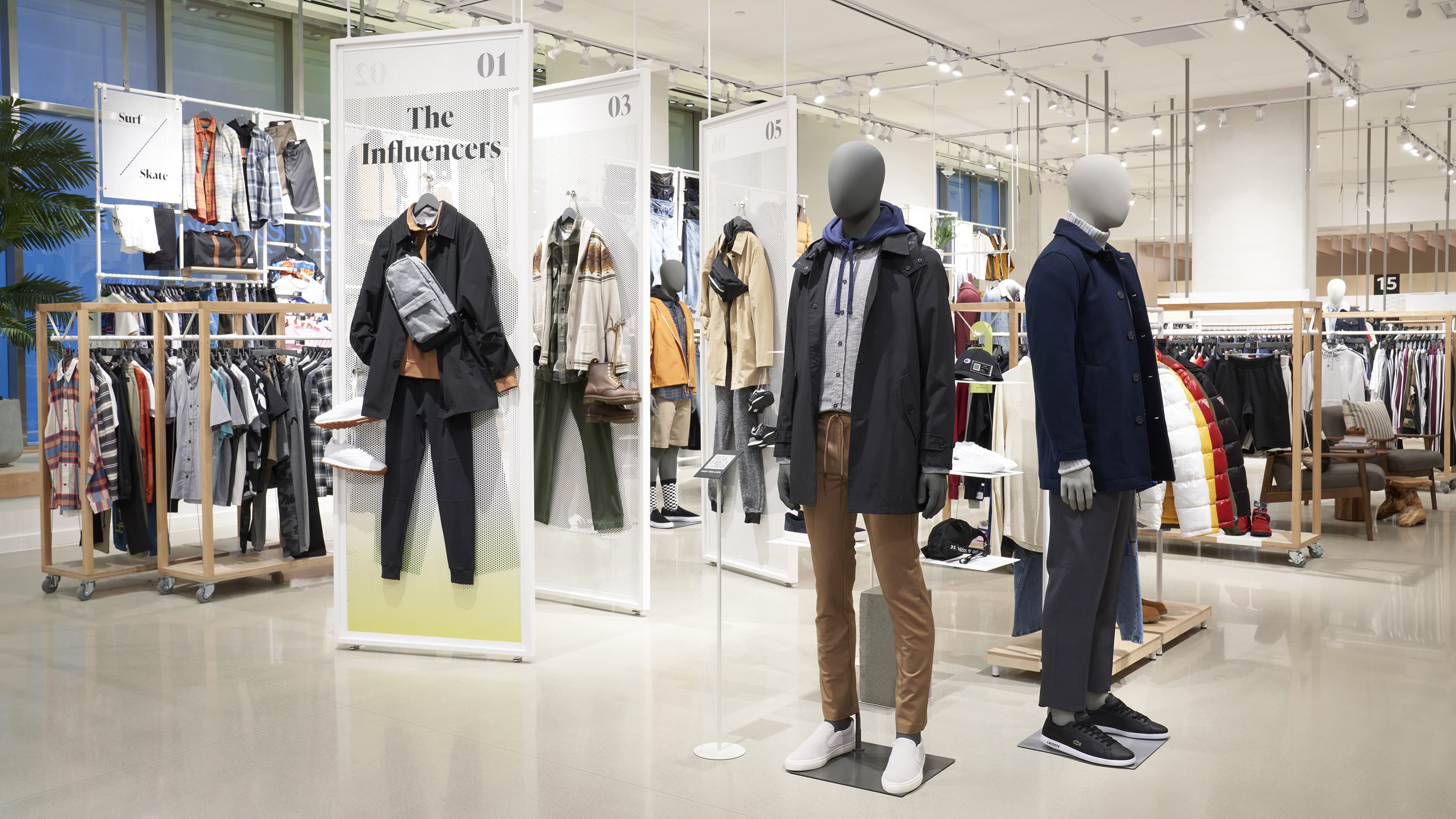
Amazon is turning one of its virtual entities into a reality — once again.
Last month, the e-commerce giant announced plans to launch a 30,000-square-foot brick-and-mortar fashion storefront called Amazon Style sometime in 2022. It’ll be located in The Americana at Brand mall in Los Angeles next to traditional retail brands like Nordstrom, J. Crew, Urban Outfitters and H&M.
This isn’t Amazon’s first venture into brick-and-mortar spaces: It also owns and operates convenience store chain Amazon Go, Amazon 4-star, bookstore chain Amazon Books and Whole Foods Market.
According to the company, the Amazon Style floor will only feature one of each product for sale — much like a typical shoe store. Customers will scan an item’s QR code in an accompanying app to request different sizes or colors, which they can then pick up at a counter or in a fitting room that’s also equipped with touchscreens.
The goal is to display more styles “without requiring customers to sift through racks to find that right color, size and fit,” Amazon Style managing director Simoina Vasen told CNBC last month.
It’s an audacious concept. Here’s what it’ll look like, according to the company’s renderings:
Mixing retail and e-tail
Amazon’s website offers countless items made by countless different fashion brands. The new storefront will have to pick and choose its inventory more sparingly.
According to the company’s announcement, the store will focus on apparel, shoes and accessories selected by “fashion curators and feedback provided by millions of customers.” It noted that the store will carry labels customers already “know and love,” but didn’t name any specific designers.
Touchscreen displays will be installed in the fitting rooms so shoppers rate items or request different styles or sizes, according to Amazon.
Amazon
The focus on space efficiency will allow the store to carry “more than double the number of styles” of a traditional department store, the company said. That’ll mean a heavy reliance on tech, from the store’s app and touchscreens to a palm recognition service called Amazon One, which will provide “fast and convenient” checkouts, the company said in a statement last month.
Employees will still work in the physical store, but their roles will be almost entirely based on customer service, according to the statement. Their responsibilities will include organizing the storefront’s layout, stocking requested items in dressing rooms, assisting shoppers at checkout and managing back-of-house operations.
Amazon Style’s accompanying app will offer shoppers to browse new styles, sizes and colors, in store and out, says the company.
Amazon
Some of the technology involved isn’t new: Nike’s flagship store in New York City has an app that helps customers request items in fitting rooms. Clothing and accessories brand Reformation also only displays one of each item on the floor, and its dressing areas allow shoppers to pose in mirrors with different lighting.
Go big or go online
The decision to launch Amazon Style makes at least some sense: Amazon is the largest clothing retailer in America according to Wells Fargo research, but in-store purchases still make up more than 85% of the country’s total retail sales, according to the U.S. Department of Commerce.
However, not all of Amazon’s brick-and-mortar projects have been successful.
Amazon Style’s first storefront is set to open in The Americana at Brand mall in Los Angeles sometime in 2022.
Amazon
The e-commerce giant used to have dozens of pop-up stores selling Amazon-branded products and services, like Kindle e-readers and Prime Video memberships, located within malls, Kohls’ stores and Whole Foods locations across the country.
In 2019, the company shuttered the experiment, closing all 87 of its U.S. locations at the time, telling CNBC that it was “instead expanding Amazon Books and Amazon 4-star” to “provide more comprehensive customer experience and broader selection.”
Amazon Style will offer a varying array of “women’s and men’s apparel, shoes, and accessories” selected by “fashion curators and feedback provided by millions of customers,” the company says.
Amazon



